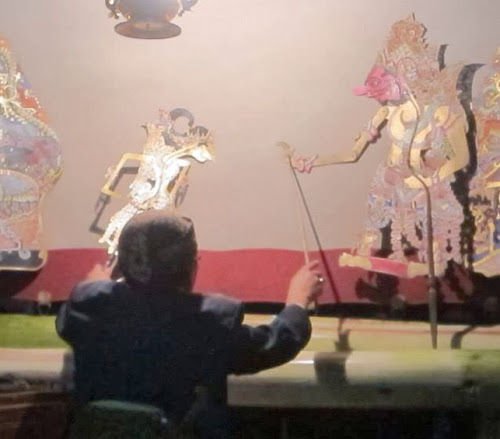Gigi Brady, wayang prep and performance, 20-23.01.14
The Javanese Wayang is a traditional Indonesian form of shadow puppetry. While we were in Yogyakarta, we had the opportunity to watch and participate in one of these gamelan-accompanied shows.
Our introduction to wayang happened on our first day in Yogyakarta, during which we participated in a puppet making workshop. Though I'm not much of a visual artist, the intricacy of joint hinges and color was very interesting, and I ended up having a lot of fun. The students with whom we worked also let us keep our puppets, as well as a few samples they had made previously.
This workshop, coupled with some introductory gamelan, was the only preface we received to wayang. Maybe this flew over my head when trying to coordinate hitting keys, and damping the previously hit keys, but I did not realize that we would be accompanying the entirety of the show until we were already on the spot.
Vision is perhaps our most widely used sensory domain, and when playing music in a group, the sense that I use to determine when to play, especially at the beginning, or at the end of a piece. Gamelan is different in this sense, in that the drummer gives auditory cues that signal both the beginning, middle sections, and endings of tunes, and for me, these cues were very difficult to catch, often resulting in a loudly resonating solo note, after the ensemble had finished playing. We played the same tune over and over again until we were cut off, sometimes more than ten times in a row. The instrument I was playing, the saron, was one of the bigger ones, and came with a rather weighty mallet, which tired my arm out easily.
The experience was nothing short of exhilarating; knowing you can make or break a performance is an extremely humbling experience, and the support we received from faculty and students alike was heartwarming and helped build our confidence.







No comments:
Post a Comment